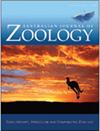湿地中家鼠(小家鼠)丰度的增加对Typha sp.开花的响应:对理解东部草鸮(Tyto longimembris)湿地占用模式的影响
IF 1
4区 生物学
Q3 ZOOLOGY
引用次数: 3
摘要
摘要随着资源的增加,种群数量的增加往往伴随着捕食者数量的增加。未受威胁的东部仓鸮(Tyto alba delicatula)和受威胁的东部草鸮(Tyto longimembris)是掠食者,它们的占据模式可能与猎物的丰度有关。确定导致主要猎物增加的资源对进一步了解这些物种的生态是很重要的。在这里,我验证了草籽导致南方夏季湿地家鼠(小家鼠)丰度增加的假设,并确定了一种湿地单子房,为实现这一效果提供了食物来源,并报告了东部草鸮和仓鸮的观察结果。在新南威尔士州Kooragang岛的一个2.6公顷的湿地区域,几乎每周进行一次调查,以量化从9月到4月的猎物丰度,为期三年(2016-2019)。Typha sp.(一种单子叶植物)的开花期与家鼠观察的增加时间一致(开花组n = 90,非开花组n = 2),其中22%的家鼠以Typha花/种子为食或从花茎中逃跑。东部草鸮只在台风花期被观察到(n = 3)。这些观察结果证实了最初的假设,并导致了另一个假设的形成:东部草鸮的湿地占用受台风花期的影响。未来的研究应旨在验证这一假设,并确定其他湿地植物为湿地啮齿动物提供重要的食物来源。本文章由计算机程序翻译,如有差异,请以英文原文为准。
Increased house mouse (Mus musculus) abundance in wetlands in response to Typha sp. flowering: implications for understanding wetland occupancy patterns of the eastern grass owl (Tyto longimembris)
Abstract. Rises in abundance of a population in response to increased resources is often followed by a rise in predator abundance. The non-threatened eastern barn owl (Tyto alba delicatula) and the threatened eastern grass owl (Tyto longimembris) are predators that may have occupancy patterns linked with prey abundance. It is important to identify the resources that cause increases in primary prey items to further understanding of the ecology of these species. Here I test the hypothesis that grass seeds cause increased abundances of wetland-dwelling house mice (Mus musculus) in austral summer, and identify a wetland monocot that provides a food recourse to achieve this effect, as well as report eastern grass owl and barn owl observations. A 2.6 ha wetland area (on Kooragang Island, New South Wales) was surveyed almost weekly to quantify abundance of prey items from September to April for three years (2016–2019). Typha sp. (a monocot) had flowering periods that coincided with increases in house mouse observations (n = 90 in flowering, n = 2 in non-flowering), where 22% were detected feeding on Typha flowers/seeds or fleeing from flower stalks. Eastern grass owls were only observed during a Typha flowering period (n = 3). These observations confirmed the original hypothesis and led to the formulation of another hypothesis: wetland occupancy by eastern grass owls is influenced by Typha flowering. Future studies should aim to test this hypothesis and identify other wetland plants that provide an important food source for wetland-dwelling rodents.
求助全文
通过发布文献求助,成功后即可免费获取论文全文。
去求助
来源期刊
CiteScore
2.40
自引率
0.00%
发文量
12
审稿时长
>12 weeks
期刊介绍:
Australian Journal of Zoology is an international journal publishing contributions on evolutionary, molecular and comparative zoology. The journal focuses on Australasian fauna but also includes high-quality research from any region that has broader practical or theoretical relevance or that demonstrates a conceptual advance to any aspect of zoology. Subject areas include, but are not limited to: anatomy, physiology, molecular biology, genetics, reproductive biology, developmental biology, parasitology, morphology, behaviour, ecology, zoogeography, systematics and evolution.
Australian Journal of Zoology is a valuable resource for professional zoologists, research scientists, resource managers, environmental consultants, students and amateurs interested in any aspect of the scientific study of animals.
Australian Journal of Zoology is published with the endorsement of the Commonwealth Scientific and Industrial Research Organisation (CSIRO) and the Australian Academy of Science.

 求助内容:
求助内容: 应助结果提醒方式:
应助结果提醒方式:


